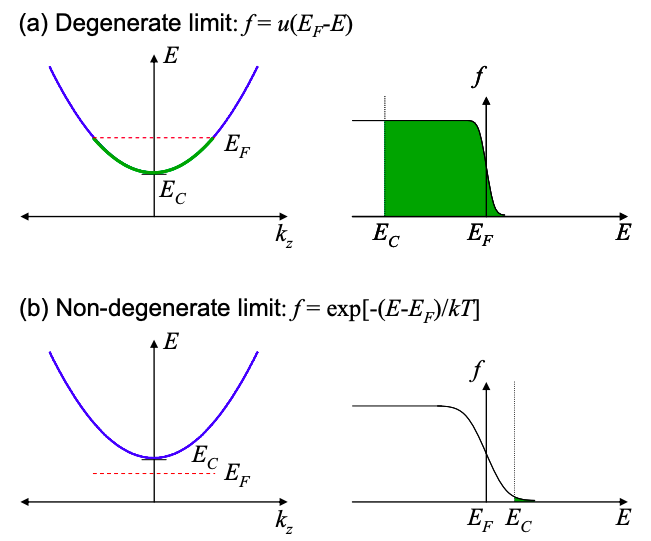2.4: Metals and Insulators
- Page ID
- 50019
Metals are good conductors; a small difference between \(F^{+}\) and \(F^{-}\) yields a large difference between the number of electrons in \(+k_{z}\) and \(-k_{z}\) states. This is possible if the bands are partially filled at equilibrium.
If there are no electrons between \(F^{+}\) and \(F^{-}\), then the material is an insulator and cannot conduct charge. This occurs if the bands are completely empty or completely full at equilibrium. We have not yet encountered a band that can be completely filled. These will come later in the class.
Thus, to calculate the current in a material, we must determine the number of electrons in states that lie between the quasi Fermi levels. It is often convenient to approximate Equation 2.2.2 when calculating the number of electrons in a material. There are two limiting cases:
degenerate limit: \(E_{F}-E_{C} \ggkT\).
As shown in Figure 2.4.1(a), here the bottom of the band, \(E_{C}\), is much less than the Fermi energy, \(E_{F}\), and the distribution function is modeled by a unit step:
\[ f(E) = u(E_{F}-E) \nonumber \]
non-degenerate limit: \(E_{C}-E_{F} \ggkT\).
As shown in Figure 2.4.1(b), here \(E_{C} \geq E_{F}\) and the distribution function reduces to the Boltzmann distribution:
\[ f(E) = \text{exp}[-(E-E_{f})/kT] \nonumber \]



